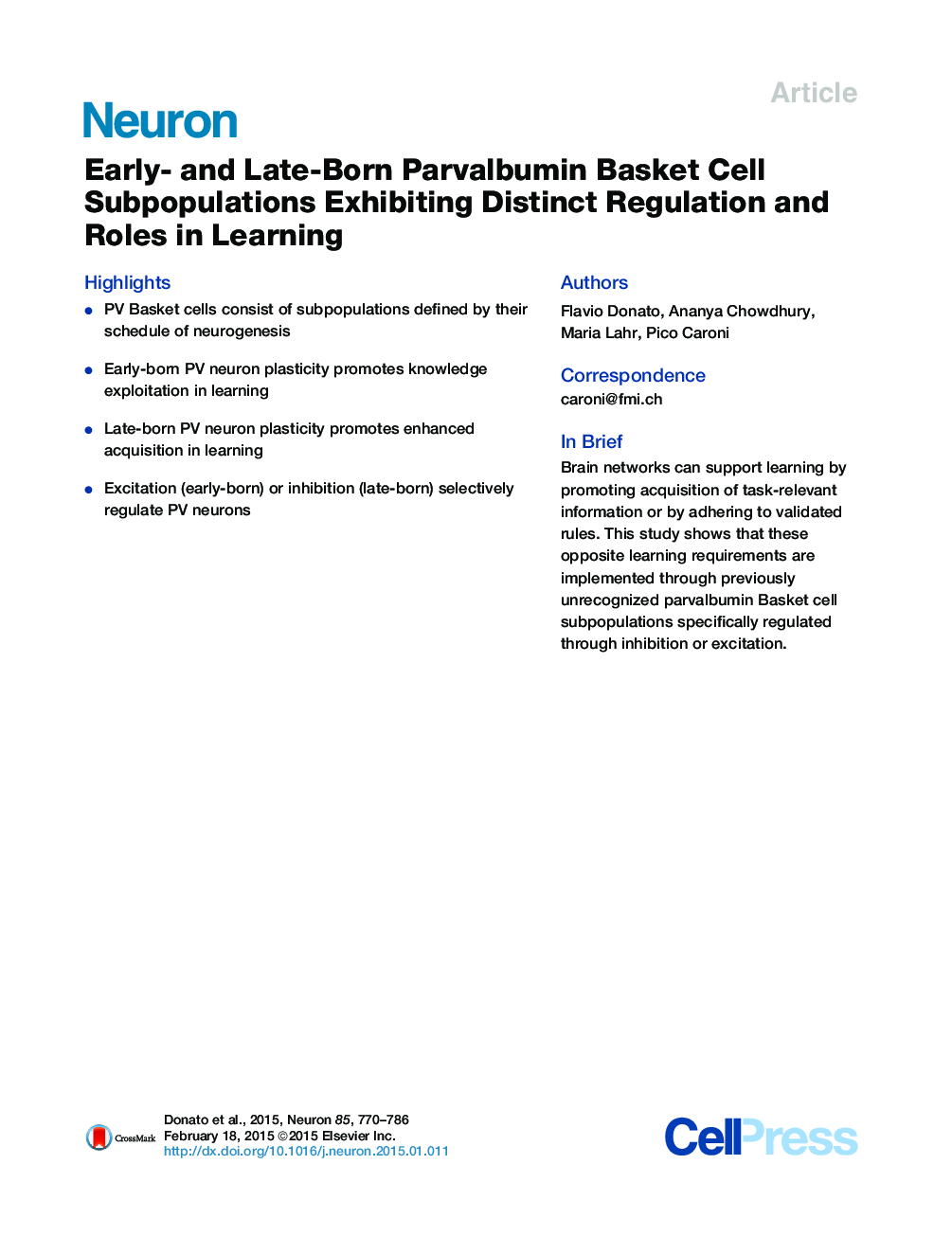| Article ID | Journal | Published Year | Pages | File Type |
|---|---|---|---|---|
| 4320891 | Neuron | 2015 | 17 Pages |
•PV Basket cells consist of subpopulations defined by their schedule of neurogenesis•Early-born PV neuron plasticity promotes knowledge exploitation in learning•Late-born PV neuron plasticity promotes enhanced acquisition in learning•Excitation (early-born) or inhibition (late-born) selectively regulate PV neurons
SummaryBrain networks can support learning by promoting acquisition of task-relevant information or by adhering to validated rules, but the mechanisms involved are poorly understood. Upon learning, local inhibitory parvalbumin (PV)-expressing Basket cell networks can switch to opposite configurations that either favor or interfere with further learning, but how this opposite plasticity is induced and relates to distinct learning requirements has remained unclear. Here, we show that PV Basket cells consist of hitherto unrecognized subpopulations, with distinct schedules of neurogenesis, input connectivities, output target neurons, and roles in learning. Plasticity of hippocampal early-born PV neurons was recruited in rule consolidation, whereas plasticity of late-born PV neurons was recruited in new information acquisition. This involved regulation of early-born neuron plasticity specifically through excitation, and of late-born neuron plasticity specifically through inhibition. Therefore, opposite learning requirements are implemented by distinct local networks involving PV Basket cell subpopulations specifically regulated through inhibition or excitation.
